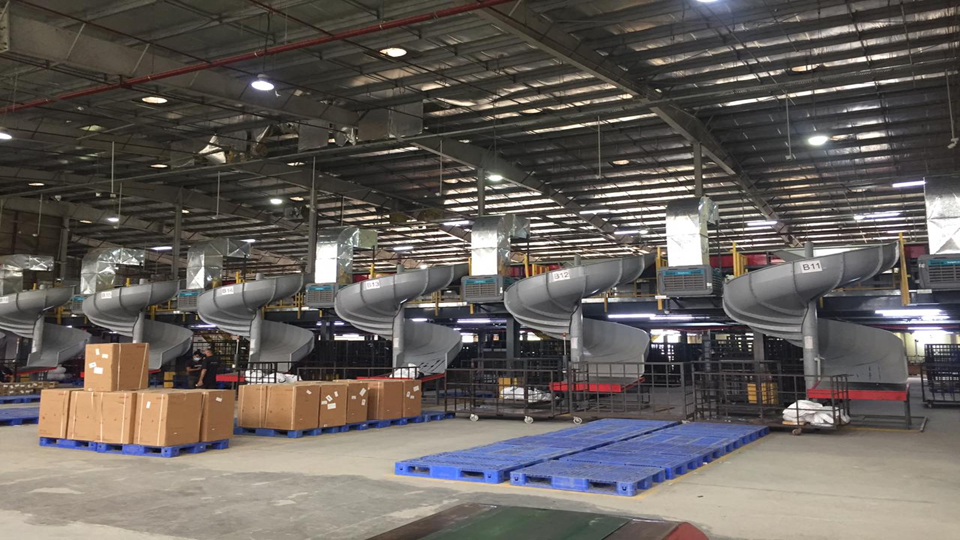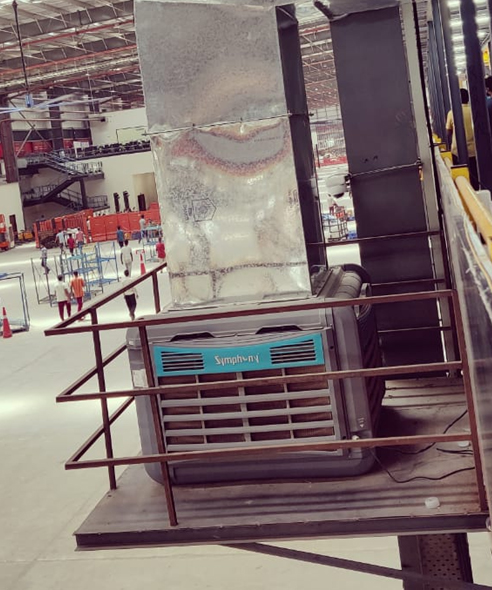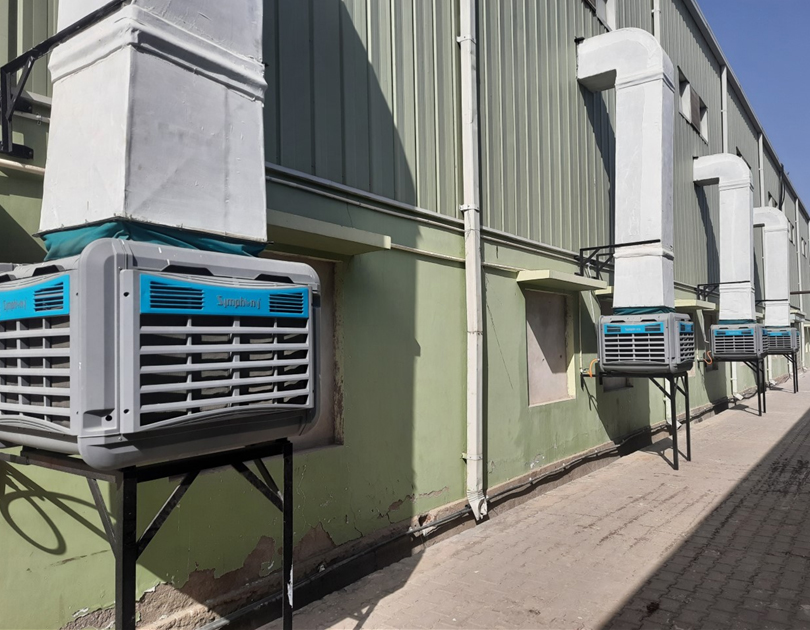Avoiding Warehouse Industrial Air Cooling Mistakes: Key Insights

Modern warehouses operate on a massive scale, where internal heat buildup is more than just uncomfortable - it hampers operations, damages stored goods, and increases downtime. While many believe installing a few fans can solve the problem, real-world logistics hubs tell a different story. Industrial cooling in warehouses demands precise planning, the right equipment, and smart airflow strategies.
Here’s how leading logistics operators avoid common mistakes - and how you can optimize your air cooling solutions for high performance in demanding warehouse environments.
Why Is Industrial Air Cooling Critical for Warehouse Operations?
Large-scale storage facilities often become heat traps. The combination of machinery, constant movement, and enclosed roofing quickly turns them into hot zones. A well-executed industrial air cooling strategy ensures:
- Better air circulation around stored goods
- Comfortable working conditions for staff
- Reduced machine overheating and breakdowns
- Improved operational speed and safety
And it all starts with choosing the right industrial cooler, designing a smart duct layout, and ensuring proper cooling coverage across the entire facility.
Common Mistakes in Warehouse Industrial Cooling - and How to Avoid Them?
Different food segments require specific solutions. Here’s how industries address those requirements using proven cooling models.
1. Undersized Cooling Units
One of the most common mistakes is underestimating the cooling requirements of a warehouse. Residential or small-scale units simply can’t handle the large square footage. Without a proper assessment, you’ll end up with uneven temperatures and persistent hot zones.
Solution:Use industrial-grade models like Symphonys PAC 20U or Venti Cool 25U, specifically designed for large industrial spaces. These heavy-duty coolers offer a powerful air throw and large cooling pad surfaces, ensuring widespread and effective cooling.

2. Ignoring Airflow Direction
Poor placement of coolers can lead to disrupted airflow, leaving sections of the warehouse undercooled or causing stagnant air near racks and workstations.
Solution:Choose eco-friendly coolers with suitable air discharge configurations - top, side, or bottom. For instance, Symphonys PAC 32i with top discharge enables overhead air movement, keeping wall and floor paths unobstructed for better circulation.
3. Poor Ducting Design
Improper duct layouts can cause pressure drops and uneven cooling. Long ducts without adequate outlets leave distant areas undercooled, reducing overall efficiency.
Solution:Design ductwork with multiple strategically placed outlets. Symphony models like the PAC 32i or VC 25U can be connected to well-designed duct systems to ensure a uniform spread of cool air across all zones in the warehouse.
How Industrial Air Coolers Solve Airflow Problems in Large-Scale Logistics Hubs?
Logistics giants understand that effective airflow is not just about reducing temperature - it’s about directing the air precisely where it’s needed. That’s where evaporative air coolers come in.
These systems are particularly effective in semi-open and large ventilated spaces. Instead of using gas compressors like traditional air conditioners, they rely on water-saturated cooling pads to reduce air temperature. Cool, fresh air is then delivered through ducts or grills.
Models like Symphony’s PAC 20U and VC 25U excel in logistics settings because:
- They support top, side, or bottom discharge setups
- They allow flexible duct configurations
- They maintain strong airflow while consuming minimal energy
- They improve indoor air quality by constantly circulating fresh air
These features make them ideal for areas with fluctuating heat loads - like loading docks, dispatch centers, and return processing zones.
Four-Side Cooling Pads: A Game-Changer in Industrial Air Cooling
Cooling inefficiencies often stem from outdated or limited pad designs. Four-sided cooling pads revolutionize this by increasing the surface area available for evaporation and ensuring balanced airflow from all directions.
Benefits of Four-Side Cooling Pads:
- Higher evaporation rates, especially in hotter environments
- Even air output across all directions, eliminating hot spots
- Reduced strain on the motor, translating into lower energy costs
Symphony’s VC 25U, equipped with this advanced pad design, offers exceptional performance. When multiple units are strategically installed across a large warehouse, they deliver consistent cooling - even during peak operating hours.
Avoiding Costly Downtime with Smart Industrial Cooling Systems
Without effective cooling, logistics hubs face a range of issues:
- Heat stress among workers
- Overheated electronic devices like scanners and conveyor controls
- Spoiled goods, especially perishables in temporary storage
- Redundancy: Multiple units per zone to ensure backup in case of failure
- Efficiency: Evaporative systems can use 60–80% less energy compared to traditional HVAC
- Serviceability: Models like the PAC 20U and VC 25U allow for fast repairs and easy pad replacements

Conclusion
Warehouse air cooling is not just about lowering the temperature - it’s about maintaining control, enhancing planning, and ensuring consistent operations. Logistics giants know that airflow, when optimized correctly, becomes a competitive advantage rather than a weakness.
By investing in machines with four-sided cooling pads, modular designs, and custom duct systems, you can eliminate common pitfalls. Avoiding mistakes like using undersized units or neglecting airflow direction helps transform your warehouse into a highly efficient logistics center.
FAQs - Warehouse Industrial Air Cooling
They provide improved airflow, enhanced cooling efficiency, and reduce the energy load on cooling systems.
Pads and water systems should be inspected monthly. Full servicing is recommended every 3–6 months for optimal performance.
Yes. They consume significantly less power than traditional HVAC systems and are ideal for large, semi-open environments.
No. Residential units are not designed to handle the scale or heat loads of industrial spaces.
Loading docks, packing stations, dispatch areas, and return zones typically see the most benefit due to high heat loads and activity.


